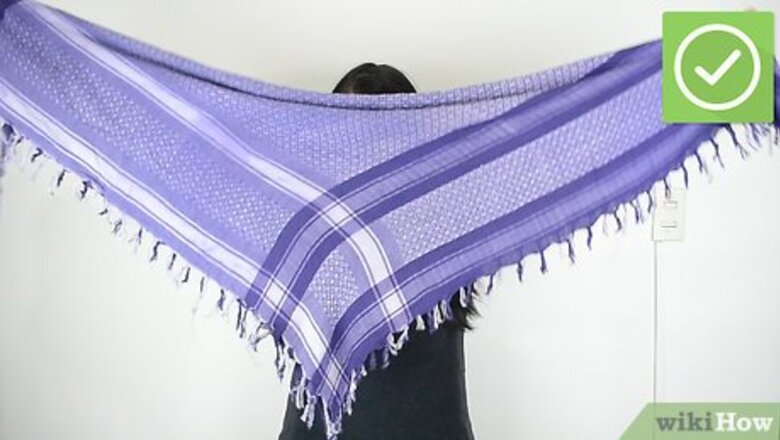
views
X
Research source
Traditional Head and Face Wrap Combination[2] X Research source
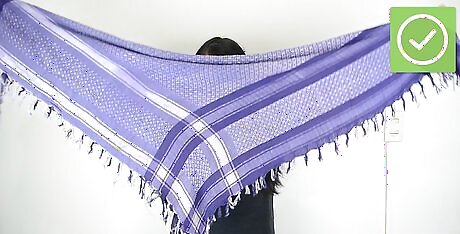
Fold the shemagh into a triangle. With the shemagh completely open, match one corner with the corner diagonally opposite from it, folding the square in half and into a triangle. This particular tying method is a good option if you want to use the shemagh to protect your head and face from cold winds or hot sun.
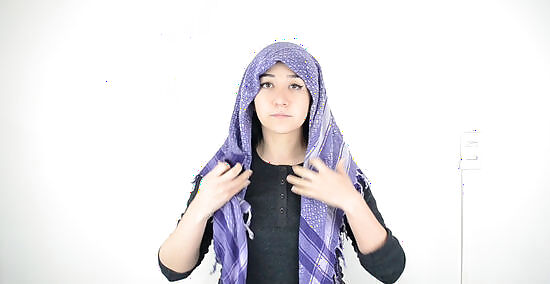
Drape the shemagh over your forehead. Pull the folded edge of the shemagh over your forehead, positioning it somewhere between your hairline and your eyebrows. The excess material should drape over the top of your head and down the back, not in front of your face. If you have tied a bandana in the past, then a good way to think of this initial position would be to act as though you are preparing to tie a really large bandana. The two ends of the shemagh should be about equal for this style, so position the folded edge with the middle resting on your head.
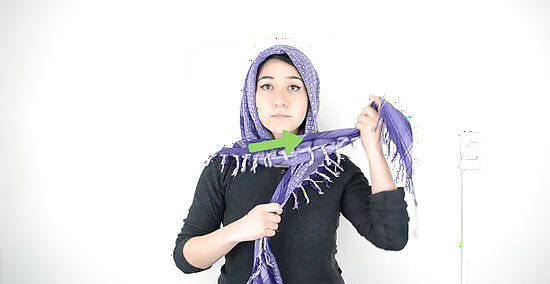
Wrap the right side under your chin. Pull the right side around to the left so that it wraps completely under your chin. Pull the end over your shoulder and toward the back of your head. Hold this end in place with your left hand while working with the left side to prevent it from loosening. A shemagh needs to be fairly tight in order to be effective.
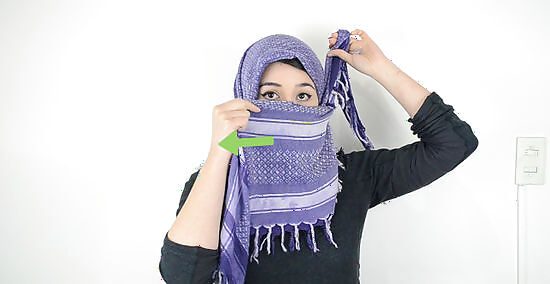
Wrap the left side over your face. Grab the leading or folded edge of the left side with your right hand and pull it all the way across your face, toward your right side. Unlike the right side of the shemagh, this left side should drape across your nose and mouth, not under your chin. Pull the right end over your shoulder and toward the back of your head, as well.
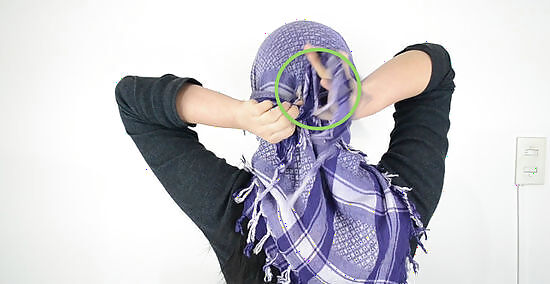
Tie the two ends at the back of your head. Use a tight overhand or double knot to secure the shemagh in place. This knot should be at the back of your head, roughly around the back center, and it must be tight enough to keep the shemagh on your face. Do not tie the knot so tightly that you make it difficult to breathe or turn your head, but make sure that the material is taut against all parts of your neck, face, and head.
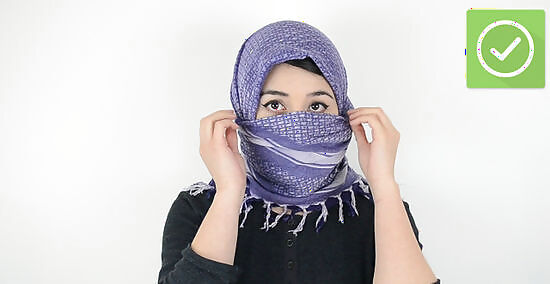
Adjust as needed. Adjust the shemagh as needed so that the material covers the top of your head and lower half of your face without covering your eyes. After this step, the shemagh is complete. One major advantage of this wrapping style is its versatility. You can pull the bottom off your face to create a simple headwrap, or you can pull both the bottom and top portions down so that they sit around your neck, creating a scarf.
Tactical Head and Face Wrap Combination[4] X Research source
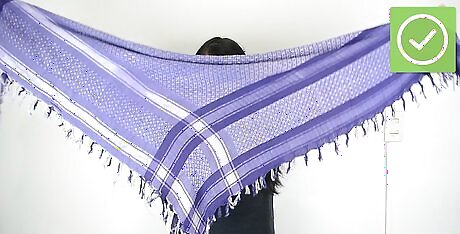
Fold the shemagh into a triangle. With the shemagh completely open, match one corner with the corner diagonally opposite from it, folding the square in half and into a triangle. This particular tying method is a good option if you want to use the shemagh to protect your head and face from cold winds or hot sun. It's especially good if you also want to protect yourself from breathing in sandy or debris-filled air.
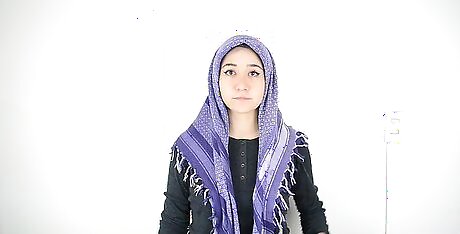
Drape the shemagh over your forehead. Pull the folded edge of the shemagh over your forehead, positioning it somewhere between your hairline and your eyebrows. The excess material should drape over the top of your head and down the back, not in front of your face. Choose a point roughly three-quarters of the way along the folded edge. There should be more material on the right end than on the left. If you have ever tied a bandana, a good tip would be to hold the shemagh over your forehead as though you were getting ready to tie a really large bandana.
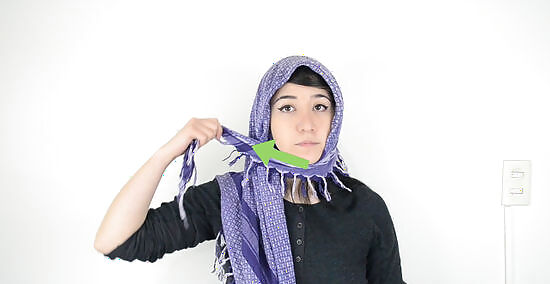
Pull the shorter end under your chin. Wrap the left side, or the shorter side, of the shemagh under your chin and up toward the back of your head. Hold this piece still with your right hand. Do not tuck the end into the rest of the shemagh fabric yet.
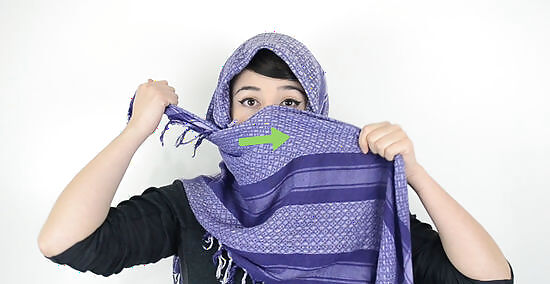
Wrap the longer side across your face. With your free hand, pull the right side or the longer side across your face so that it covers your nose and mouth.
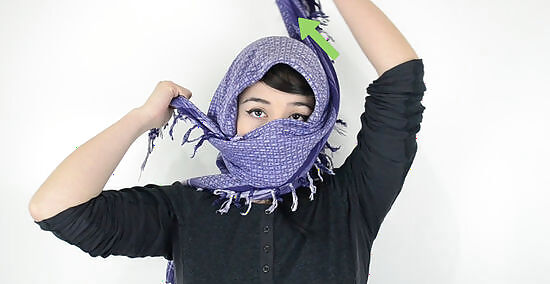
Wrap the longer side over your head. Continue to wrap the longer end of the scarf by bringing it up and over the top of your head. The edge should drape completely over your head, and the end should roughly meet the end on the opposite side. One hand should still be holding the first end taut against the side of your head while your other hand maneuvers this second end around.
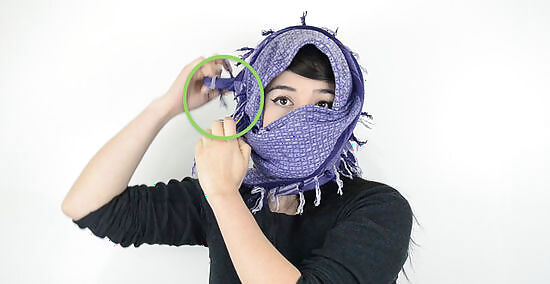
Tie the two ends together. Tie two overhand knots to secure the shemagh in place. Do not tie the knot so tightly that you make it difficult to breathe or turn your head, but make sure that the material is taut against all parts of your neck, face, and head.
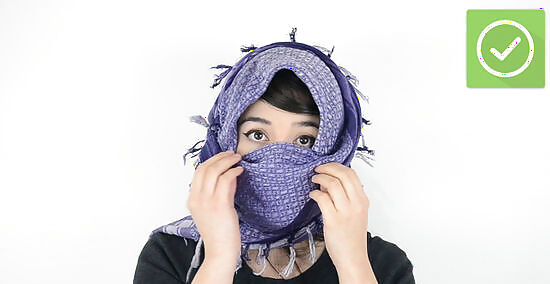
Make any necessary adjustments. Adjust the shemagh as needed so that the material covers the top of your head and lower half of your face without covering your eyes. After this step, the shemagh is complete. A primary disadvantage of this wrapping style is that the shemagh cannot be easily pulled down off the head and turned into a scarf. This is a secure wrapping style, however, and provides your head with greater protection than the traditional or casual wrapping style mentioned here.
Loose Neck Scarf
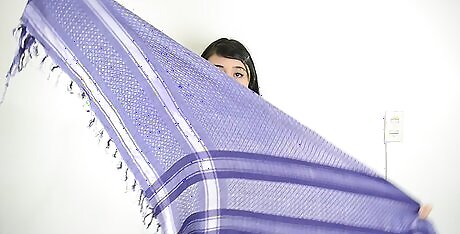
Fold the shemagh into a triangle. With the shemagh completely open, match one corner with the corner diagonally opposite from it, folding the square in half and into a triangle. This style is not necessarily the most practical, nor is it especially traditional, but it can be a casual and trendy way to wear a shemagh.
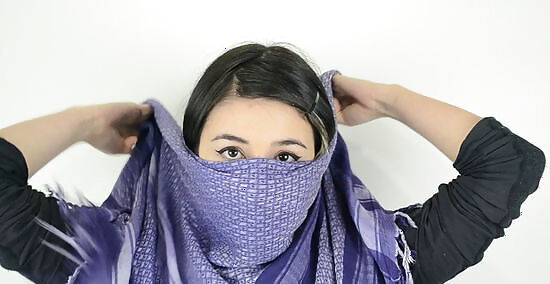
Place the fabric over the lower half of your face. The folded edge of the shemagh should cover your nose and mouth. Two corners should appear on either side of your face, and the other corner should drape down in front of your face and over the top part of your neck and chest.
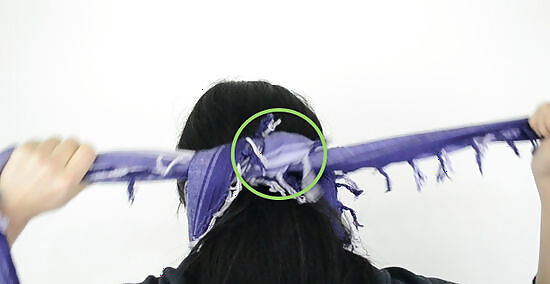
Wrap the ends around your neck. Bring the short ends over your shoulders and around the back of your neck. Tie them in place. As you bring the shemagh around your neck, hold the ends up to keep the material taut against your face. Tie a single knot at the back of your neck. The knot should be tight enough to hold the shemagh in place but not so tight that you have difficulty breathing or turning your head.
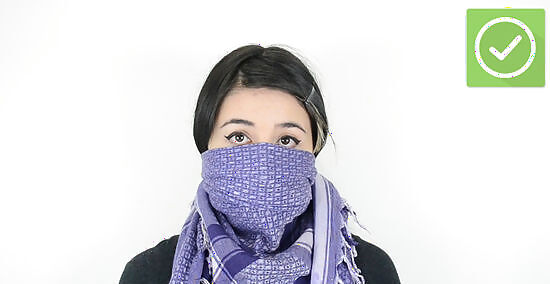
Let the ends hang down over your chest. Bring the left and right ends of the tied shemagh back over your shoulders so that they drape down loosely over your chest. You do not need to tuck them in or hide them.
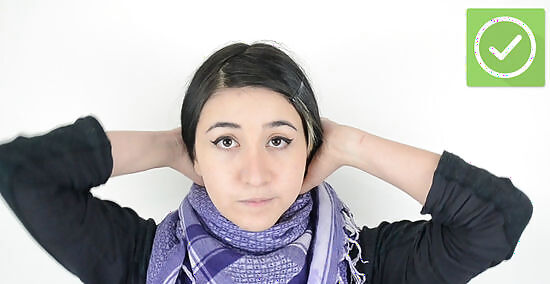
Adjust as needed. Gently tug on the top part of the shemagh so that the portion covering your nose and mouth is re-positioned to rest just below your chin and around your neck. This step marks the end of this particular method.
Tidy Neck Scarf
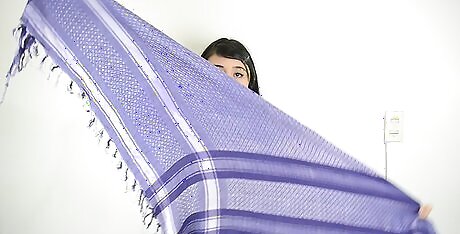
Fold the shemagh into a triangle. With the shemagh completely open, match one corner with the corner diagonally opposite from it, folding the square in half and into a triangle. This style is not necessarily the most practical, nor is it especially traditional, but it can be a casual and trendy way to wear a shemagh.
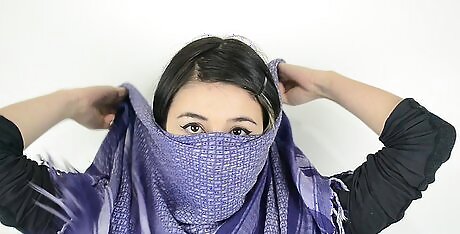
Wrap the fabric over the lower half of your face. The folded edge of the shemagh should cover your nose and mouth. Two corners should appear on either side of your face, and the other corner should drape down in front of your face and over the top part of your neck and chest.
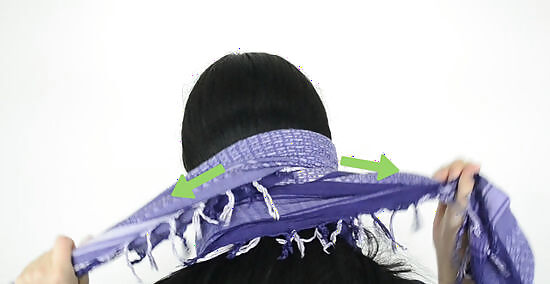
Wrap the ends around your neck without tying them. Bring the short ends to your left and right over your shoulders and around the back of your neck. Cross them over each other at the back of your neck before bringing both sides back around to the front. As you bring the shemagh around your neck, hold the ends up to keep the material taut against your face. For this style, you should not tie the shemagh behind your neck. Instead, the two ends should only cross over each other once. While still keeping the two ends secure and taut, bring each end back over the shoulder opposite its original side so that both are positioned over your chest. Do not let go of the ends yet.
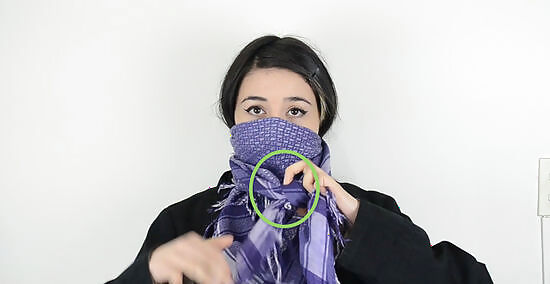
Tie the ends in front of you. Tie the two ends in front of you, still holding them taut. Hide the ends under the long end or remaining corner of your shemagh. Use a single knot at the approximate center of your neck. The knot should be tight enough to hold the shemagh in place but not so tight that you have difficulty breathing or turning your head.
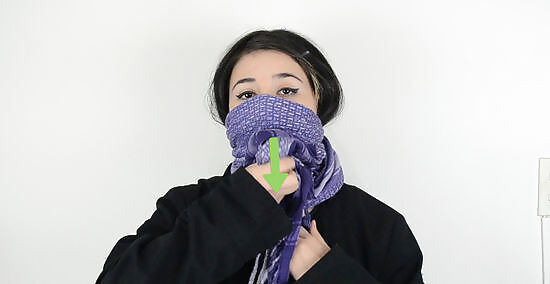
Tuck the shemagh into your jacket. If you are wearing a jacket, blazer, or other form of outerwear, unbutton or unzip the top portion and tuck the ends of the shemagh underneath. Partially button or zip the jacket back up to hide these ends and create a tidier appearance. This step is only optional. You can leave the ends hanging out of your jacket, if desired. Doing so can make the style look a little more relaxed.
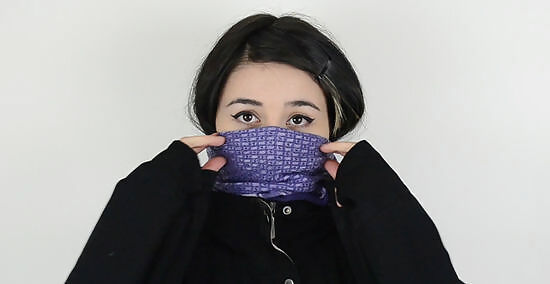
Adjust as needed. Gently tug on the top part of the shemagh so that the portion covering your nose and mouth is re-positioned to rest just below your chin and around your neck. This step completes this particular tying method.
Tight "Bandana" Scarf
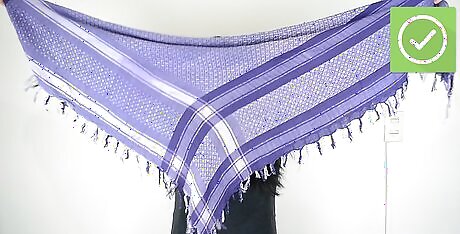
Fold the Shemagh in half, to make a triangle.
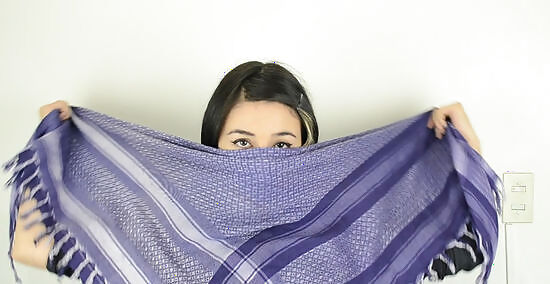
Pull it over your face (like a bandana) and hold.
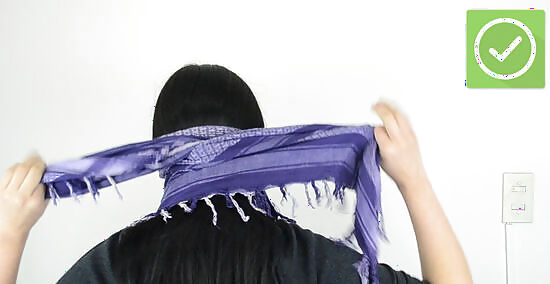
Pull the two loose ends to the back of the neck and wrap around to the front (without tying).
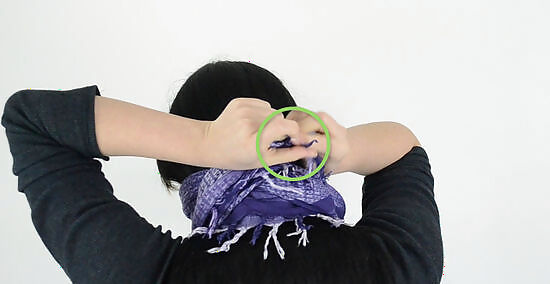
Pull to the back again and tie moderately tightly. Adjust as needed, as to not choke yourself out.




















Comments
0 comment